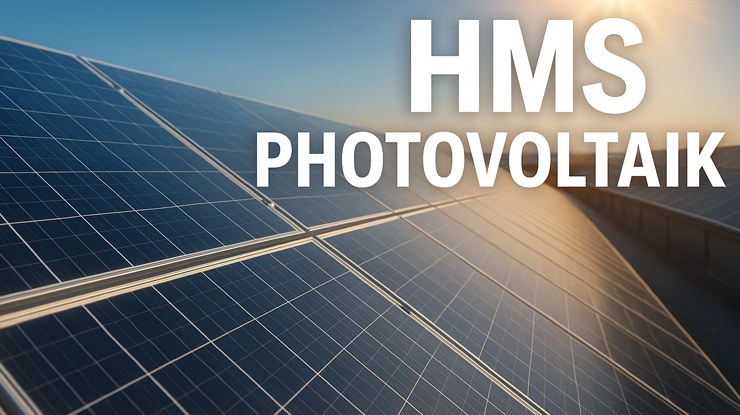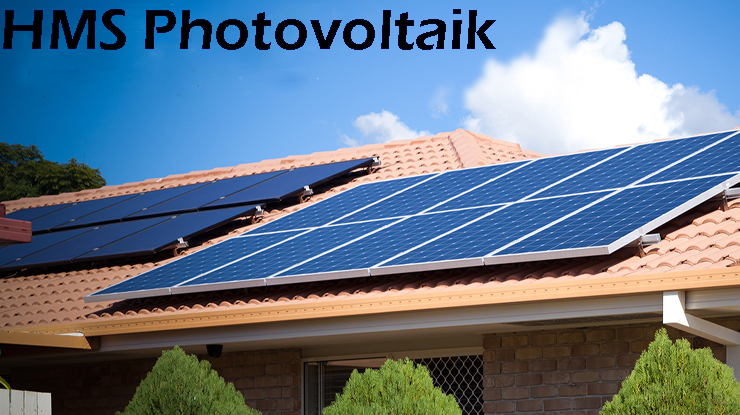Introduction
In recent years, solar energy has become a key part of the clean energy transition. One interesting term you might hear is HMS Photovoltaik. In this guide, I explain what HMS Photovoltaik means, how it works, its benefits, limitations, and how you can use it in real life. I also include 10 frequently asked questions with simple answers. The tone is friendly and easy to read.
What Is HMS Photovoltaik?
“HMS Photovoltaik” is not a widely standardized technical term you will find everywhere. It combines two ideas:
- HMS: This can refer to hybrid management systems, hardware-monitoring systems, or “hybrid management solutions”
- Photovoltaik: The German / technical form of “photovoltaic” — meaning converting sunlight into electricity via solar panels
So overall, HMS Photovoltaik refers to a solar system that uses intelligent management, monitoring, and hardware integration to make photovoltaic systems smarter and more efficient. In short: it is a solar setup that does more than just panels — it uses controls, storage, smart software, and monitoring to balance energy flow.
How HMS Photovoltaik Works

To understand HMS Photovoltaik, you first need to know how a basic solar system works:
- Solar panels (photovoltaic cells) absorb sunlight and convert it into DC (direct current) electricity.
- Inverters convert DC into AC (alternating current), which is usable in homes and the grid.
- System load & grid: Some electricity is used immediately; extra may be stored or sent to the grid.
What HMS Photovoltaik adds is:
- A hybrid management unit that decides when to use solar power, when to draw from battery, or when to pull from the grid
- Monitoring and control software that tracks how much power is produced, consumed, stored, or wasted
- Energy storage (batteries) so excess solar energy can be used later (at night or during cloudy hours)
- Smart decision-making: the system may choose to store energy or feed into the grid depending on tariffs, demand, and weather predictions
Thus, an HMS Photovoltaik system is like a “smart brain” sitting between solar panels, battery, and grid, making the best choices in real time.
Key Components of HMS Photovoltaik
To build (or understand) such a system, you need these parts:
- Photovoltaic panels (monocrystalline, polycrystalline, or thin film)
- Inverter(s) (or hybrid inverters)
- Battery or storage system (lithium-ion or other types)
- Hybrid management controller / energy management system (EMS)
- Monitoring interface/software (apps, dashboards)
- Wiring, safety equipment, and structural mounting
Each component must be well matched so that the system works reliably.
Benefits of HMS Photovoltaik
Using HMS Photovoltaik offers many advantages:
- Better energy use: The system can reduce waste by controlling flows intelligently
- Greater energy independence: You rely less on the grid, especially when solar + battery cover your needs
- Cost savings: Over time, lower electricity bills and better use of free solar energy
- Real-time monitoring: You can see your system performance, spot faults early, and get alerts
- Backup during outages: If grid fails, energy stored in battery can power your home
- Optimization of resources: The system can shift load to when solar is high, or reduce use when expensive grid rates apply
These benefits make HMS Photovoltaik more attractive than a simple solar + grid setup.
Challenges & Limitations
However, there are some trade-offs you must know:
- High initial cost: Adding batteries, smart controllers, and good monitoring adds expense
- Complexity: More components means more parts that can fail and require maintenance
- Battery life & replacement: Batteries degrade over time; replacing them costs money
- Weather dependence: Solar power varies with sun, clouds, and season
- Grid regulation & policies: In some places, feeding power to the grid, or battery use, may be restricted
- Sizing and design: If systems are not properly sized, efficiency and returns suffer
Despite these, many people find the benefits outweigh the drawbacks, especially where electricity is expensive or unreliable.
Applications & Use Cases
HMS Photovoltaik is useful in many settings:
- Homes and small buildings: Rooftop solar with smart management gives better value
- Businesses and factories: Large loads can be managed better; battery helps reduce peak demand charges
- Remote off-grid sites: Where grid is absent, combining solar + battery + intelligent controller is vital
- Solar farms / utility scale: Monitoring and hybrid management helps optimize output and profitability
- Smart cities / microgrids: Many units with HMS Photovoltaik can be coordinated in a local grid
These are real and growing uses of the concept.
Steps to Implement HMS Photovoltaik

If you want to adopt such a system, here is a simple guide:
- Evaluate your energy usage: Know how much electricity you consume daily and monthly
- Assess solar potential: Which direction, shading, climate, hours of sun
- Choose system size & components: Panels, inverter, battery, management system
- Select a reputable installer: Someone experienced in smart solar systems
- Install and test: Mount panels, connect system, run tests, and calibrate the management system
- Monitor & maintain: Use the software to track performance, clean panels, check battery health
- Update & expand if needed: You can add more panels or battery capacity in future
Planning carefully can ensure the system works well for many years.
Cost & Return on Investment
Here’s how costs and returns generally look:
- Initial cost is high because of extra components (battery, controller, monitoring)
- But operational costs are low: sunlight is free, and the system self-adjusts to minimize wastage
- Over time, electricity bill savings accumulate and often pay back the investment within several years (depending on local electricity cost, subsidies, and solar yield)
- Also, some regions offer government incentives, subsidies, or favorable feed-in tariffs to support solar + smart systems
- The more you can shift your usage toward times when solar is abundant, the better your ROI
Thus, over a lifetime of maybe 10–20 years, HMS Photovoltaik can be very cost effective, especially in areas with high electricity rates.
Future Trends & Innovations
HMS Photovoltaik is likely to evolve in the coming years. Some trends:
- Artificial intelligence & machine learning for even better predictive energy management
- Improved battery technologies (solid state, longer life, cheaper)
- Better solar panels (higher efficiency, bifacial panels, flexible panels)
- Internet of Things (IoT) connecting many units and enabling community energy sharing
- Blockchain / peer-to-peer energy trading in microgrids
- Integration with electric vehicles (EVs), so your car battery becomes part of energy storage
- Smarter grid interaction, where your system responds to grid signals for balancing
These innovations will make HMS Photovoltaik systems more powerful, cheaper, and more flexible.
Conclusion
HMS Photovoltaik is a smart, upgraded version of solar power systems. It combines photovoltaic panels with hybrid management, storage, and realtime monitoring to make solar more efficient, flexible, and independent. While the initial cost and complexity are higher, the benefits—lower bills, energy control, backup power, and better use of solar energy—can make it a strong choice for many homes, businesses, and remote sites.
If you are considering going solar, thinking about HMS Photovoltaik is wise. In the coming years, such intelligent systems may become the standard. Let me know if you want help designing or choosing components.
10 Frequently Asked Questions
- What is the difference between HMS Photovoltaik and a normal solar system?
A normal solar system often just includes panels and an inverter. HMS Photovoltaik adds intelligent management, storage, and monitoring to make the system smarter and more efficient. - Can HMS Photovoltaik work without battery storage?
Yes, but its advantages are limited. Battery storage gives flexibility and backup power. Without it, the system must rely on grid or lose unused solar energy. - Is HMS Photovoltaik expensive?
The initial cost is higher because of extra parts (battery, controllers, software). But over time, the savings and efficiency improvements can make it worthwhile. - How long do batteries last in such a system?
Typically 5 to 15 years depending on type, usage, and quality. They slowly degrade, so replacement is expected in the life of the system. - Does weather affect HMS Photovoltaik?
Yes. Cloudy or rainy days produce less solar energy. That’s why the hybrid management and storage are needed to compensate. - Can HMS Photovoltaik systems feed energy back to the grid?
In many places yes, if local regulations allow net metering or feed-in tariffs. The system can send extra energy to the grid and earn credits. - How easy is installation and maintenance?
Installation is more complex than simple solar, due to extra components. Maintenance requires checking batteries, monitoring performance, and occasional repairs. - Are there risks in using HMS Photovoltaik?
Possible risks include component failure, battery issues, wiring faults, or system misconfiguration. Using a good installer reduces risk. - What size system should I choose?
It depends on your energy use, roof area, sunlight availability, budget, and goals (e.g. full or partial energy independence). - When will HMS Photovoltaik become more common?
As battery costs go down, solar technology improves, and smart control becomes more affordable, we expect wider adoption in the next few years.
Connect with us for more information : Blog Pioneer

